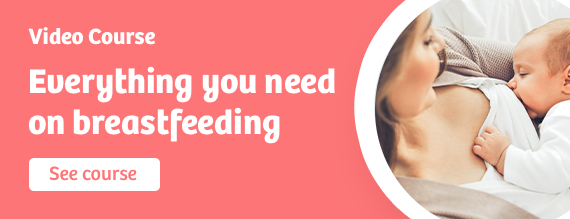Breast Lumps During Breastfeeding: Causes and Treatment
Breastfeeding mothers sometimes notice lumps in their breasts, which can be a little scary. In this article, I'll explain these lumps, why they occur during breastfeeding, how to prevent them, and the best treatments available.


What are the lumps in the breast during breastfeeding?
These lumps can be found anywhere in the breast or under the armpit, about the size of a pea or slightly larger. They are usually painful and don't disappear even after emptying the breast. They are a symptom of milk duct blockage.
Causes
The imbalance between Supply and Demand
When the baby's feeding doesn't match the amount of milk the mother's body produces, complications arise. If the baby doesn't feed until the breast is emptied or if the mother's body has more milk than the baby needs (when the mother over-stimulates her breasts by pumping milk after feeding), problems can follow. Therefore, it's vital not to pump milk unnecessarily.
Improper Latching
Correct latching is vital to successful breastfeeding, ensuring that the breast is emptied and the baby is getting enough milk.
Abrupt Weaning
As mentioned in a previous article, sudden weaning is not the right way to stop breastfeeding. It can have negative effects on both the child and the mother. When milk continues to be produced, it can lead to blocked milk ducts. Therefore, it's essential to partially empty the breasts during the weaning journey.
Tight-fitting Bras
This is a common cause many mothers overlook. Some nursing mothers wear tight bras with underwires, potentially leading to blocked milk ducts and lump formation. It's essential to wear a bra that fits well, providing support without pressing on the breast.
Does the Prolactin Hormone Cause Breast Lumps?
The prolactin hormone is responsible for balancing breast milk supply and demand. When there's excessive stimulation for its secretion, it can also lead to the formation of breast lumps.
Risk factors
Fully relying on pumping
When a mother relies solely on pumping and doesn't directly breastfeed the baby, the breast might not be entirely emptied. Therefore, I advise mothers who rely on pumped milk to manually express their breasts after pumping to ensure complete emptying and avoid lump formation.
Using nipple shields
Nipple shields are among the accessories used for breastfeeding and might be essential for some mothers. However, they can also result in the breast not being fully emptied, leading to milk lumps.
Tips to avoid milk lumps in the breast
- Breastfeed the baby on demand.
- Directly breastfeed.
- Choose a proper breastfeeding position to ensure the breast is fully emptied.
- Ensure the proper latch of the baby.
- Rest as much as possible.
- Consult a lactation specialist or doctor immediately if any lump is noticed.
Complications of breast lumps during breastfeeding
Is there a risk in leaving these lumps untreated? The answer is yes! They can grow and number, leading to Mastitis. This condition might require medical intervention, as the inflammation can spread through the body. In some cases, long-term blockage of the milk ducts might cause permanent damage to these ducts. Therefore, it's essential to treat these lumps as soon as possible.
Treatment
The most common treatment in the past was massaging the breast to eliminate these lumps. However, it's no longer recommended as vigorous and rough massaging can damage the ducts due to congestion.
B.A.I.T therapy
This approach is summarized by the initial letters of the best treatment methods:
B (Breast rest): Resting the breast and reducing pumping.
A (Anti-inflammatory): Taking anti-inflammatory medications the treating physician prescribes, like Ibuprofen.
I (Ice): Applying ice has been shown to relieve breast swelling and congestion.
T (Tylenol): A brand-name pain reliever containing paracetamol, effectively reducing pain intensity.
Dietary modifications
Reducing the intake of animal fats is advisable. Some studies have shown that animal fats can make breast milk denser and more viscous in some women, potentially leading to blocked milk ducts.
Rest
Emptying the breast through direct breastfeeding.
When breastfeeding, position the baby so that its chin is aligned with the lump in the breast for better drainage.
The lumps usually disappear within a day or two at most by following these treatments.
When to see a doctor?
- It's essential to consult with a doctor for thorough examinations in the following situations:
- If the lumps don't disappear despite using the treatments mentioned.
- If the number and size of the lumps increase.
- If the mother experiences a fever.
- If the lumps keep recurring.
Also read How to feed a baby with reflux?






